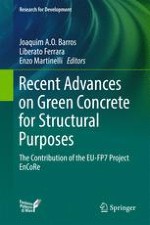2017 | OriginalPaper | Chapter
6. Generalised Mix Design Rules for Concrete with Recycled Aggregates
Authors : Eduardus A. B. Koenders, Enzo Martinelli, Marco Pepe, Romildo Dias Toledo Filho
Published in: Recent Advances on Green Concrete for Structural Purposes
Publisher: Springer International Publishing
Activate our intelligent search to find suitable subject content or patents.
Select sections of text to find matching patents with Artificial Intelligence. powered by
Select sections of text to find additional relevant content using AI-assisted search. powered by
